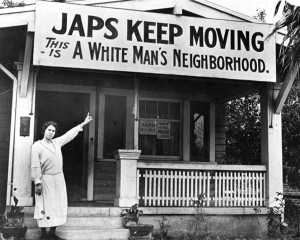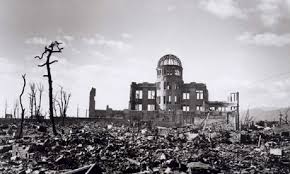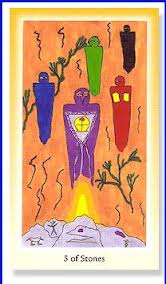Apr 30, 2015 | Goddard, The Writing Life
(reposted from The Writer in the World, the blog for the Goddard College MFA in Creative Writing Program.)
Last week, I was invited to talk to a class at City College in New York. Someone asked me about structure; specifically what I thought of the fact that none of the books on their syllabus, including my memoir, had a traditional structure. It wasn’t until that moment – when I learned that the class I was visiting was called Reading/Writing the Asian American Diaspora – that I considered that my own obsession with fractured structures might be more than individual taste. I am writing from the margins, about otherness, about race. How could I do that with one voice?
One voice is representation. One voice could be all there is. It is only through a multitude of voices that we can get a truer picture of who we are.
This is not a problem faced by those writing about a mainstream, dominant culture. It is essential, though, for those whose stories have been erased, or defined falsely; whose histories have been rewritten. For me, as a half-Japanese American (Hapa) woman from Hawaii, my subjects are secrets, missing inheritance, and erasure because these are part of my family legacy. I write to discover. And the artist in me creates my structures so that my readers will experience that as I do.

My first novel, Why She Left Us, was inspired by my discovery that my Japanese American infant mother and her family were interned behind barbed wire in a camp in the middle of America during Word War II. I quit my job and traveled through time, across the country, to a place of tumult and shame, where people were treated like criminals and stripped of their citizenship, possessions and dignity because they looked (physically, in the way we choose to differentiate people) like the enemy. I found a history of racial discrimination and hatred that had been stripped out of our America-is-the-good-guy narrative, that was not spoken of in families. My answer to “Who am I?” was incomplete until I listened: to the many former internees who shared their stories with me, their secrets, a passing window into their lives.
Splintered truths, disappearances, mysteries: was it any wonder that the structure of my first novel reflected all of these? There was no single “what happened.” There was, and is, a still-shifting, still-surfacing truth.

My memoir, Hiroshima in the Morning, also deals with an erasure: the experience of what happened when the first atomic bomb was dropped on people. Again, this history was redacted not only in our textbooks, but also in families, mine included. The survivors’ – the hibakusha’s – stories had been stifled by death, family, time, and repetition, but the facts were censored from the beginning by the U.S. government, which confiscated pictures, film, and restricted journalists’ movements and stories. The very few accounts that are available are representations of scientific achievements, a life-saving victory, a generous American response to rebuild the faces of a handful of long-suffering “maidens.”
These are not the only stories.
Perhaps because I am the child of a mixed race marriage, I feel these stories slipping away, a drop of ink dissolving into water. I write about them, not as a historian or to establish facts, but because we hide what we are ashamed of. And in our sweeping human history of what “we” did to “them,” our most powerful justification is explicitly or implicitly the concept of race.
Race is not biology. It is a social construct that we use to separate. But it is not the only one. We define all sorts of categories, roles and identities (even motherhood!) to separate ourselves from ourselves: to belittle, or reward, or limit, or control. The beauty of Goddard College is that it attracts writers, thinkers, people who are trying to overcome divisiveness by finding common ground in difference. Another way to say this? MFA students come to Goddard because they have something to say – a way of seeing the world that is uniquely theirs and that they want to share. They don’t come to write like someone else, nor do they come to tell a story that has already been told. They are standing in the margins – whether one we already have a reductive label for, or from a line of sight and an experience that is entirely their own – and they are doing it on purpose to shift their readers’ reality. It is the artist’s calling, and her gift, to challenge our assumptions, to rewrite the victors’ history, and to remind us that the destruction that we cause is our choice and the categories we force upon each other are our fiction.
That’s why we write. And, maybe, why some of us in the “Asian American Diaspora” choose a multiplicity of voices and non-traditional narratives to offer a glimpse into what our collective humanity might look like from a different point of view.
For more posts about writing, and to get a look inside the Goddard Creative Writing Program, please visit our blog: thewriterintheworld.com
Jan 18, 2015 | Events, Goddard, Hedgebrook, The Writing Life
 Where are you writing? Aerogramme’s new list of retreats for 2015 includes Hedgebrook, an oasis for women writers near and dear to my heart: hard to get into (with 1500 applications this year!) but worth reapplying for, since, once you are a Hedgebrook alumna, you have a family for life. I’ll be teaching there for Vortex with the amazing Ruth Ozeki, who just visited Goddard, where I am on the faculty of the MFA in Creative Writing program, on the coldest day in anyone’s memory in Vermont (minus 23).
Where are you writing? Aerogramme’s new list of retreats for 2015 includes Hedgebrook, an oasis for women writers near and dear to my heart: hard to get into (with 1500 applications this year!) but worth reapplying for, since, once you are a Hedgebrook alumna, you have a family for life. I’ll be teaching there for Vortex with the amazing Ruth Ozeki, who just visited Goddard, where I am on the faculty of the MFA in Creative Writing program, on the coldest day in anyone’s memory in Vermont (minus 23).  At Goddard, we have just finished an action-packed week of writing, reading, learning, listening, dreaming, and thanks to Ruth, meditating our way into our stories so that we can access the world of our stories with our bodies. The MFA students are still talking about you, Ruth, and voraciously reading their new signed copies of A Tale for the Time Being.
At Goddard, we have just finished an action-packed week of writing, reading, learning, listening, dreaming, and thanks to Ruth, meditating our way into our stories so that we can access the world of our stories with our bodies. The MFA students are still talking about you, Ruth, and voraciously reading their new signed copies of A Tale for the Time Being.
If your writing life is inclined less toward a two year Masters’ program, and more toward a three day weekend retreat (and if you are female!) this year, Hedgebrook’s Vortex is offering small workshops, lectures and panel discussions with a new group of teachers, including Carole DeSanti, Dani Shapiro, Victoria Redel, and Hannah Tinti. What an amazing group of writers for a long weekend! (Full bios and brand new workshop descriptions on the Hedgebrook website here.) It would be lovely to see you there, in one of the most magical places I know.
Jun 7, 2013 | Goddard, Random Thoughts, The Writing Life
Once upon a time, when I was in a moment of artistic crisis, a dear, talented, compassionate and necessary writer told me this: “We write to clear a path in the forest that others may follow and then step off of to create their own paths.”
Today, on her blog, she writes, “What troubles me about rejections is that perhaps the audience I imagine for this work is not right, or doesn’t exist. Maybe I’m the only one interested in the things I write about. And if I am my only reader, then I don’t really need to write it, do I?”
Last night, I was reminded of the story of the Emperor’s new clothes, and how it takes only one small voice saying “Look at that man’s dinky!” to show us all, immediately, that we are being lied to. We ARE being lied to. The artist is the person who knows.
You are not your only reader, Elena. You are not the only one interested in identity and fitting in and cruelty and family and isolation and food and inheritance and war and trauma and equality and racism and freedom and love and all the other things you write about. We live in a society in which we all agree that Monday morning is the time we get up and go to work, and that work and what we get paid for it is the measure of our self worth. That is only an agreement – and a silly one at that – and we can change it anytime we decide to agree on something else. But without artists, we will never see the nakedness of our arbitrary collective decisions and make a change.
Mar 19, 2013 | Goddard, Random Thoughts, The Writing Life
Just came back from Vermont, where I did a number of readings with Rachel Pollack‘s Shining Tribe Tarot, and this card, the Five of Stones, came up several times. It meant, variously, You are healed; Healing is coming; Embrace your role as a healer; and Aspects of yourself that you gave up are returning to be reclaimed. This morning, finally back at my desk, an email from Rob Brezsny’s Truth and Beauty Lab mused on the experience of healing and love by quoting Rachel:
“We cannot predict the results of healing, either our own or the world around us,” she said. “We need to act for the sake of a redemption that will be a mystery until it unfolds before us.”
I look forward to that unfolding.

Mar 5, 2013 | Goddard, Hedgebrook, The Writing Life
As I sit in my new office working with my advisees at Goddard, revision is on everyone’s mind. My colleague, Elena Georgiou, says revision is what separates the women from the girls, and years into my third and fourth books, I can claim my full womanhood. Revision is writing, and at its best, it should be fun. After all, our pages are not a clay pot or an oil painting. We can revise to our heart’s content, throw out, get messy, and return to the original if we have proven to ourselves that we really did have it right the first time. There is no harm in revision for writers, only the chance for surprise.
Recently, Ruth Ozeki shared with me her story of the revision, and re-envisioning (not to mention the massive throwing out of pieces), of her new novel A Tale for the Time Being. Her words, which follow, are part of a larger interview I did with Ruth that is published on SheWrites. You can find the full “Five Questions” here.
From Ruth:
“I can date Nao’s voice back to the fall of 2006. That’s when I first heard her, and that’s when I wrote down those first lines. But I can also trace a lot of what wound up in the book to earlier times. I’d been haunted by the diaries of the Japanese kamikaze pilots ever since I first started reading them in 2001. And, too, my interest in human-computer interface design started back in 2005, when I was the Katzenstein Artist-in-Residence at MIT.
“This novel emerged very slowly. I knew from the first that one of the protagonists was a young girl, Nao, who is writing a diary. I knew that Nao was speaking across time and that she needed a reader. My first impulse was to put myself in the novel, but then I rejected this idea because it felt too self-conscious, metafictional and annoyingly PoMo, so I set about auditioning other readers for Nao. I went through four or five Readers, each one worse than the next. Some were female, most were male, one was some kind of amorphous, ageless, unformed smear of a character, neither male nor female, who lived in a library.
“By end of 2010, I finished a draft I was reasonably happy with, or if not happy, at least I felt I’d gone as far as I could go by myself. I submitted it to my agent and we were getting ready to submit it to my editor when, in March of 2011, the earthquake hit Japan, followed by the tsunami and the meltdown at Fukushima. Day after day I watched this disaster unfold. It was absolutely terrifying and heartbreaking. Over night, everything had changed. Japan had changed. The world was no longer the same, and a byproduct of this seismic upheaval was that the novel I’d written was now utterly irrelevant. So I withdrew it.
“That May, I went back to work. The novel is told as a kind of dialogue, with two interleaved voices, Nao and the Reader. I realized that Nao’s voice was still fine. The problem was the Reader I’d written. So I unzipped the manuscript, threw away that Reader and stepped into the role myself, as the character of Ruth. What had felt gratuitous and self-conscious five years earlier, now felt necessary. Stepping into the role myself and responding to it seemed to be the only way of acknowledging the magnitude of the disaster, and once I did this, the writing came very very quickly. I started in May and finished in November.”
Jan 23, 2013 | Goddard, Hedgebrook, The Writing Life
I am delighted to be a part of The Next Big Thing, the “authors and the authors who love them” weblog chain in which I answer questions about what I’m working on and get to introduce you to two gifted friends and writers. Ruth Ozeki tagged me for this, and her long-awaited novel, A Tale for the Time Being, is coming out in March. I got a sneak peak at it in close-to-final form, and I can say that, much as I loved her first two books, this novel of tsunamis and Hello Kitty lunch boxes, mysterious diaries and hundred year old Buddhist nuns is her best and worthy of all the accolades it is getting and will get. Buy it.
And buy the books I am recommending below by Sherri L. Smith and Bhanu Kapil (more on them in a minute). There are alternate universes out there that only someone else could dream of and they are waiting for you!
On to the questions.
What is the working title of your book?
I have two books, actually. Shadow Child is an adult, literary novel, the one Ruth mentions in her blog. It’s also the one Sherri helped me with at Hedgebrook without ever reading a word of, and that Bhanu has heard pieces of at Goddard College, where we teach together in the MFA Program for Creative Writing and where we occasionally tromp through the woods. So I guess I should talk about that one. But just so you know, there is another book out there, a fantasy series called The Matrix of Fear, which may come out first…
Give us a brief synopsis of your book?
Sisters Hana and Kei grow up in a tiny Hawaiian town in the 1950s and 1960s, so close they share the same nickname. Fatherless and mixed-race, they are raised in dreamlike isolation by their loving but unstable mother. But when their cherished threesome is broken, and then further shattered by a violent betrayal that neither young woman can forgive, their bond may be severed forever–until, six years later, Kei arrives on Hana’s New York City doorstep with a secret that will change everything.
Sounds dark. Okay, it is dark. But mysterious and exciting.
How long did it take you to write it?
Somewhere between four and thirteen years, depending on how you count. And still counting. I started Shadow Child in 2000, when it was just the story of the twins, and had about half a draft when I left for Japan in 2001 to research the character of their mother, Miya, who was to have her own book. My life derailed on that trip, and long story short, I spent the next seven years working on a memoir about Japan. The memoir went through many revisions (from terrible diary to memoir, to fiction, to hybrid, and back to memoir…) and, in the background, Shadow Child became a single novel. In 2010, I went back to it, and I am now trying to braid the stories of each twin and their mother together into a cohesive whole.
Who or what inspired you to write this book?
“Who” is my great-aunt, Mary Hamaji. I interviewed her about the Japanese American internment camps for my first novel, Why She Left Us, and she told me about her experience working for the American Occupation in Japan after the war and the effects of the atomic bombings on Hiroshima and Nagasaki. Her stories eventually inspired Miya, who survives both the internment and the bombing. And those stories eventually took me to Hiroshima, where I lived for six months.
“What” is Hawaii. I grew up there and, though I have lived in New York now for more years than I admit to, I still find my imagination returning to the Big Island. The town of Hilo offered itself as a setting for the story. Hilo was devastated by two tsunamis, one in 1946 and one in 1960, and is quite close to the active volcano, so the setting is a character in itself. I did a lot of research in Hilo, spent a good deal of time in the Pacific Tsunami Museum, and interviewed a number of people who lived there in the 50’s and 60’s. In the end, though, Shadow Child is set in an unnamed city that isn’t exactly Hilo, mostly because my story is not historical fiction. I didn’t want to inadvertently redefine the very real events that took hundreds of lives in Hilo with my fabrications.
What genre does your book fall under?
Literary fiction. Early on, an editor suggested I make it a thriller or a mystery, and I spent months trying… It didn’t work. The whole point of those genres is that everything is neatly wrapped up and revealed in the end, and that has never been my interest.
Which actors would you choose to play your characters in a movie rendition?
This is always the problem. The book is set in Hawaii, and therefore peopled by a multi-ethnic cast. But Hollywood isn’t filled with Japanese/Caucasian, Japanese, Hawaiian/Polynesian or even many Hapa actors.
For Miya, I would choose Tamlyn Tomita, one of the few Japanese-American female actors in Hollywood. Poor Tamlyn has the honor or dubious distinction of being cast for just about every “Japanese American woman in the WWII internment camp” role in mainstream movies. I can’t help her there, but I would still choose her.
For the twins, Hana and Kei, a young Hapa actress. Maybe Janel Parrish or possibly Kristin Kreuk.
What else about your book might pique the reader’s interest?
I mentioned my fantasy series, The Matrix of Fear. An entirely different story, different characters, different world, different tone, and yet… Both Matrix and Shadow Child feature a set of twins. In both, a cave functions as a central feature and a place where momentous events happen, and both take place in a tropical island paradise… What’s with all the parallels? I have no idea. But maybe when both books are published, someone will read them and tell me.
And now, for my tags:
Sherri L. Smith. The author of the acclaimed young adult historical novel Flygirl (which made me cry), Lucy the Giant, and others, turns her considerable talents to dystopian fantasy in her new book Orleans, due in March. Kirkus calls it “harrowing and memorable” and promises it will keep readers up long past their bedtimes. I have yet to read the pages, but Sherri and I have talked and talked of this book and its characters…and the sequels! Let there be several. Look for her answers next week here.
Bhanu Kapil. Unicorn, healer, teacher, champion of monsters, experimental writer who travels to the places where her characters die and lies down in the same rectangles of earth, Bhanu’s fifth book, BAN, is out of the incubator and in the hands of a prospective publisher. Light a candle for this book, a novel of race riots in notebook form that has also been inhabited not just in her mind space, but through the body: performed. Look for her answers to these questions here.



 At
At 